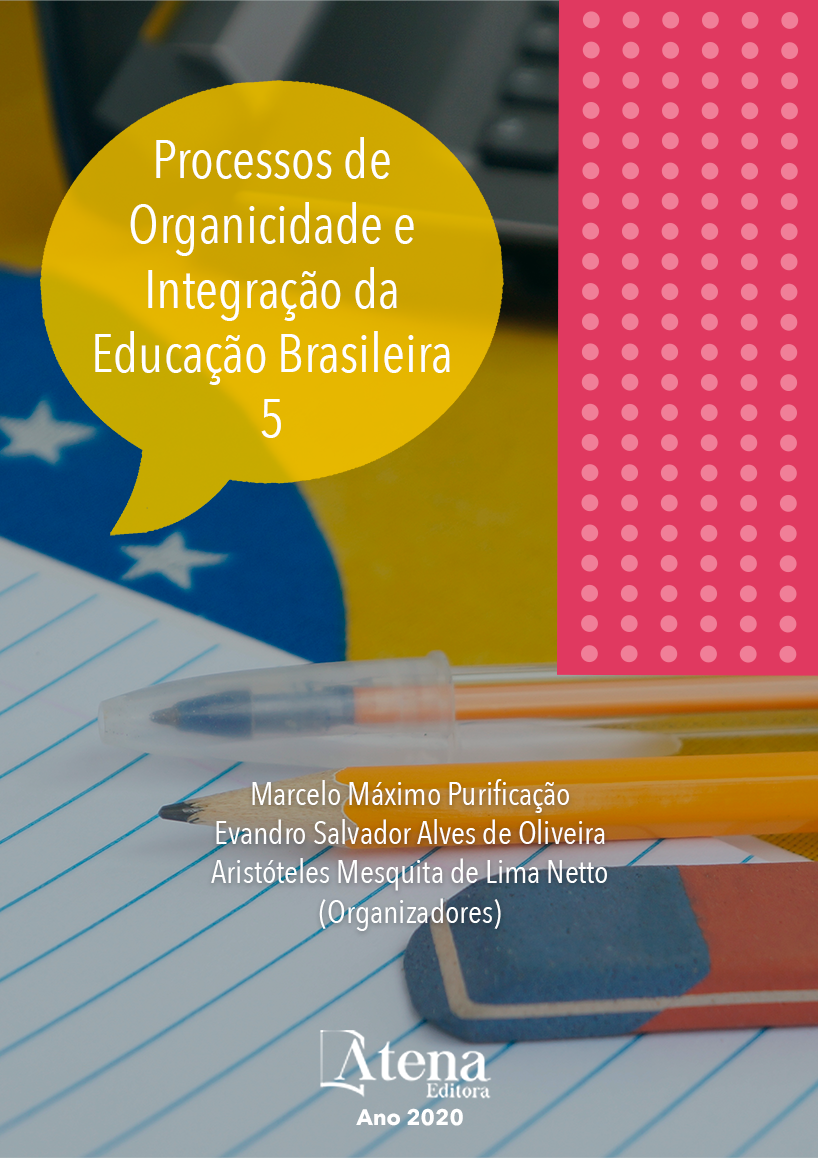
AS LINGUAGENS TEATRAIS NA COMUNICAÇÃO DA PRIMEIRA INFÂNCIA
AS LINGUAGENS CÊNICAS NA COMUNICAÇÃO DA PRIMEIRA INFÂNCIA
Luiza Lavezzo de Carvalho
Orientadora: Profª Drª Patrícia Dias Prado
Faculdade de Educação/Universidade de São Paulo
Objetivos
Conhecer e investigar como e o que comunicam as crianças pequenas através das linguagens cênicas e performáticas nas brincadeiras criadas nos espaços da Educação Infantil, entendidas como manifestações das culturas infantis na construção de uma Pedagogia da Educação Infantil fundamentada nas Artes [1].
Métodos e Procedimentos
A metodologia é do tipo qualitativa descritiva [2], com estudo de caso em uma turma de 32 meninas e meninos, de 2 a 6 anos de idade, na Escola da Vila, escola particular paulistana que se destaca nas relações com as Artes, onde a pesquisadora também atua como educadora. Os dados foram coletados através da observação participativa, com registro em caderno de campo e através de fotografias (com autorização prévia) das brincadeiras cênicas e performances junto às crianças. Os dados estão sendo analisados à luz do campo da Educação Infantil e Artes, assim como os estudos sobre o jogo dramático [4] e sobre a criança-performer [3].
Resultados Parciais
Os resultados parciais descrevem e analisam as brincadeiras cênicas das crianças pesquisadas como material para a compreensão de suas infâncias, culturas e performances. Revelam a importância de um olhar atento à formação de professoras/es para a garantia das diferentes linguagens artísticas na Educação Infantil [5]. O desafio que se edifica à Educação da primeira infância é preocupar-se, nos contextos educativos e coletivos, com as linguagens performáticas, que misturam dança, teatro, música, artes plásticas, visuais e outras áreas das Artes.
Conclusões Parciais
O caminho para compreender a comunicação da primeira infância, resulta na percepção concreta e evidenciada de que as crianças pequenas recorrem às linguagens cênicas para a expressão integral de suas culturas. Para isso, é fundamental a presença de ambientes férteis com múltiplas linguagens artísticas e estéticas. Ser performativo é também reorganizar, reinventar a própria experiência [3]. Desta forma, tem-se como conclusão parcial, a importância da formação profissional da Educação Infantil fundamentar-se no estudo e vivência das Artes, respeitando e legitimando as diversas formas de comunicação das crianças, para além do verbo [1], possibilitando que crianças e professoras possam experimentar, fantasiar e protagonizar realidades híbridas em suas brincadeiras e performances, numa relação educativa de autorias infantis e docentes.
Referências
[1] PRADO, P. D.; SOUZA, C. W. (orgs) Educação Infantil, diversidade e Arte. São Paulo: Laços, 2017.
[2] LÜDKE, M.; ANDRÉ, M. E. Pesquisa em educação: abordagens qualitativas. São Paulo: EPU, 1986.
[3] MACHADO, M. M. A criança é performer. Educação & Realidade. FACED/UFRS: Porto Alegre/RS, v.35, n.2, p.115-137, 2010.
[4] SLADE, P. O jogo dramático infantil. São Paulo: Summus, 1978.
[5] BRASIL. Lei de Diretrizes e Bases da Educação Nacional. Lei n. 9394, Brasília/DF, MEC, 1996.
AS LINGUAGENS TEATRAIS NA COMUNICAÇÃO DA PRIMEIRA INFÂNCIA
-
DOI: 10.22533/at.ed.5342029062
-
Palavras-chave: Educação Infantil e Artes; linguagens cênicas; crianças pequenas;
-
Keywords: Early Childhood education and Arts; scenic languages; small children;
-
Abstract:
THE SCENIC LANGUAGES IN FIRST CHILDHOOD COMMUNICATION
Luiza Lavezzo de Carvalho
Advisor: Prof. Dr. Patrícia Dias Prado
School of Education/University of São Paulo
Objective
This study aims to investigate how and what the small children communicate using scenic and performatic languages during their free playtime in Early Childhood Education, understood as manifestations of children's cultures in the construction of a Pedagogy of Early Childhood Education grounded on the study of the Arts [1].
Methods and Procedures
The methodology of this study is qualitative descriptive type [2], with a case study in a class of 32 girls and boys, from 2 to 6 years old, at Escola da Vila, a private school in São Paulo, engaged in arts, where the researcher also acts as educator. Research data have been collect through participative observation, with registration in field notebook and photographs (with prior authorization) of the scenic plays and performances done by the children. Data analyzes are carried out in the light of the field of Early Childhood Education and the Arts, such as the studies of the child drama [4] and the child-performer [3].
Partial Results
The partial results describe and analyze the scenic play of the researched children as material for the comprehension of their childhoods, cultures and performances. They reveal the importance of a close look at teacher’s education for the guarantee of different artistic languages in Early Childhood Education [5]. The challenge for Education of first childhood is to be concerned, in educational and collective contexts, with the performative languages, which mix dance, theater, music, visual and other Arts.
Partial Conclusions
Aiming to understand the communication of first childhood, the results of this study show the evidence that children search for scenic languages to express their cultures and perceptions of the world. For this, the presence of fertile environments with multiple artistic and aesthetic languages is fundamental. Being performative is also reorganizing, re-inventing the experience itself [3]. Thus, it has as partial conclusion, the importance of the teacher training of Early Childhood Education based on the study and experience of the Arts. Respecting and legitimizing the various forms of communication of children, in addition to the verb [1], enabling children and teachers to experience, fantasize and play hybrid realities in their games and performances, in an educative relationship of children's and teachers' authory.
References
[1] PRADO, P. D.; SOUZA, C. W. (orgs) Educação Infantil, diversidade e Arte. São Paulo: Laços, 2017.
[2] LÜDKE, M.; ANDRÉ, M. E. Pesquisa em educação: abordagens qualitativas. São Paulo: EPU, 1986.
[3] MACHADO, M. M. A criança é performer. Educação & Realidade. FACED/UFRS: Porto Alegre/RS, v.35, n.2, p.115-137, 2010.
[4] SLADE, P. O jogo dramático infantil. São Paulo: Summus, 1978.
[5] BRASIL. Lei de Diretrizes e Bases da Educação Nacional. Lei n. 9394, Brasília/DF, MEC, 1996.
-
Número de páginas: 24
- Patrícia Dias Prado
- Luiza Lavezzo de Carvalho


